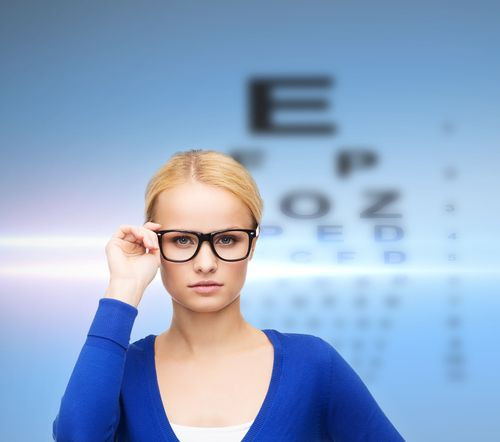Antidepressants Linked To Binocular Vision Disorder, Affecting 20% Of The Population

Many of the most interesting discoveries come about by accident, such as when Dr. George Nicholas Papanicolaou performed a genetic study and just happened to observe cancer cells on a slide containing cells from a uterus. Voila! The "Pap smear," a cancer screening test for women, was born. Similarly, in their efforts to learn more about binocular vision disorder, which affects nearly 20 percent of the population, researchers from the University of Waterloo detected an unusual relationship between this condition and antidepressant use.
"An association does not establish that one causes the other, but rather that they co-exist," said Dr. Susan Leat, a professor at the School of Optometry and Vision Science at Waterloo. Her discovery that use of antidepressants often went hand-in-hand with binocular vision disorder might help doctors to diagnose the condition, which all too often leads to falls.
Antidepressants & Women
Antidepressants are one of the most commonly prescribed medications today and though most often they are used to treat depression, doctors recommend them for a whole range of conditions, including migraines, anxiety, and eating disorders. In recent years, the Centers for Disease Control and Prevention has found them to be increasingly popular among doctors and patients alike; from 1988–1994 through 2005–2008, the rate of use among all age groups increased nearly 400 percent, though men and women over age 40 are more likely to take antidepressants than anyone younger.
Income makes no difference when it comes to using antidepressants, but sex matters. A lot. Statistically, women take more antidepressants than men — in fact, they are about two and a half times more likely to use these drugs. (Oddly, only the teen years show no difference between the number of boys and girls who take antidepressants.) Biggest users overall? Women between the ages of 40 and 59 — nearly one quarter (23 percent) of that age group take this drug.
There are many possible reasons for taking antidepressants, yet there are also many possible side effects, too. Commonly, people taking these drugs complain of nervousness, headache, upset stomach, and blurred vision. Might they also cause the same effects as binocular vision disorder, which affects depth perception and involves the way eyes work together as a team? Binocular vision (BV) disorder, which is treated with glasses, vision therapy, or in some cases surgery, is known to affect many people, but actual numbers are difficult to grasp.
As a way to get a handle on the prevalence of BV, a team of researchers led by Leat gathered data from the files of 500 older patients seen at the University of Waterloo Optometry Clinic over a one-year period. Data included age, general and ocular history and symptoms, use of antidepressants, a habit of smoking, refraction, visual acuity, BV and eye movement status for the most recent full visual examination, and an examination 10 years prior. The researchers discovered the prevalence of any BV or eye movement abnormality was 41 percent, 44 percent, and 51 percent in the 60 to 69, 70 to 79, and 80-plus age groups, respectively. These figures were lower for 10 years earlier: 31 percent, 36 percent, and 40 percent for ages 50 to 59, 60 to 69, and 70-plus, respectively. Ultimately, though, age and taking antidepressants most commonly predicted BV or other eye movement disorders. Although the drug might not cause the condition, this study certainly suggests a need for further exploration.
Source: Leat SJ, Chan LLL, Maharaj PD, et al. Binocular Vision and Eye Movement Disorders in Older Adults. Investigative Ophthalmology & Visual Science. 2013.



























